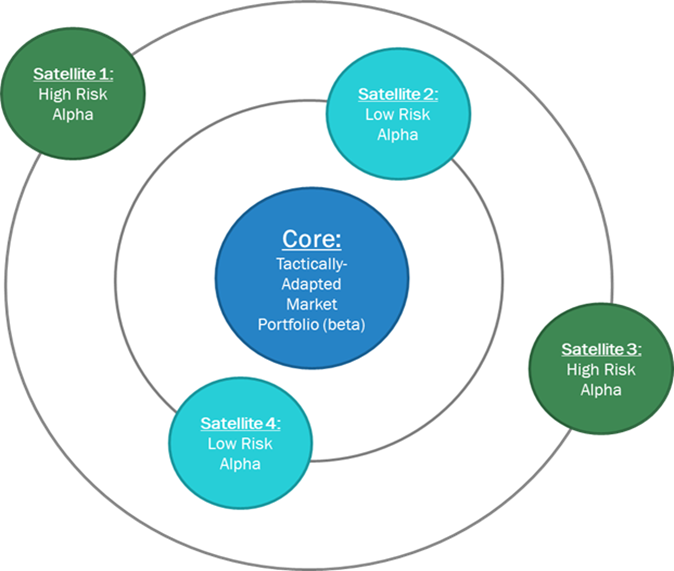
You Need a Strong Core to be Financially Fit
By: Andrew J. Willms
President and CEO, The Milwaukee Company
The muscles that are found in the center of your body (your “core”) are responsible for keeping you stable and maintaining your balance. As any fitness trainer will tell you, strong core muscles are an important part of overall fitness.
Having a strong core is also important for the health of your investment portfolio. The financial health regiment starts with a group of securities that are intended to provide stability to a portfolio by providing broad exposure to the stock and bond markets. More specifically, a portfolio’s core is intended to capture “market beta”, that is the return (and risk) provided by exposure to the overall market. Meanwhile, the part of the portfolio that falls outside the core is invested in ways that deviate from the overall market, in an effort to increase returns, lower risk, or both.

A favorite way to build a portfolio’s core is to buy and hold low-cost, index ETFs that track broad swaths of the stock and bond markets. Examples include Vanguard Total Stock Market Index Fund ETF (VTI) and iShares Core U.S. Aggregate Bond ETF (AGG). Perhaps 40% to 70% or so of a portfolio could be allocated to such a core, depending on your personal investment objectives.
While a buy-and-hold approach is a good way to build a core portfolio for a long-term investor with a high tolerance for risk, that approach provides little protection from market volatility and large losses during bear markets. As a result, The Milwaukee Company prefers to use rules-based investment strategies to manage the index ETFs that comprise the core portfolio, in an effort to capture market beta with less risk.
That part of the portfolio that falls outside the core are typically invested in satellites, which are comprised of individual stocks and bonds or actively managed funds expected to offer the potential for outperformance (a.k.a. alpha). In most cases, the management of the satellites are driven by ad hoc stock-picking and market timing decisions made by the person who manages the investment portfolio.
Market timing and security selection may provide some short-term gains at times. However, numerous research studies have demonstrated that over the long-term a portfolio manager’s efforts to outperform the market are more likely to lead to lower net returns (after deducting fees and trading costs) and higher risk, unless the satellites are managed using academically sound, evidence-based tactical asset allocation strategies.
Accordingly, The Milwaukee Company has developed a variety of proprietary satellite strategies which are supported by both historical evidence and academic research conducted by us and independent scholars. Moreover, because our satellite strategies utilize rules-based decision making, they can also be thoroughly back-tested to see how they would have performed in the past. In addition, we run computer simulations to see how they can be expected to perform in the future in a variety of scenarios.
While using market data to inform investment decisions is preferable to relying on personal opinions, gut decisions or instinct, it is not a fool-proof approach because market data is inherently backward looking. Therefore, it makes sense to have a satellite strategy that is designed to respond to fast-paced market and economic developments that may not yet be reflected in current market data, on which tactical asset allocation strategies depend. The Milwaukee Company refers to its approach to do just that as our Counterweight Portfolio, which will be the subject of an upcoming post.
Core-satellite portfolio construction brings greater stability to an investment portfolio by providing increasing diversification, and reduced risk. The use of dynamic asset allocation strategies such as those developed by The Milwaukee Company can expand on the benefits provided by a core-satellite approach.
